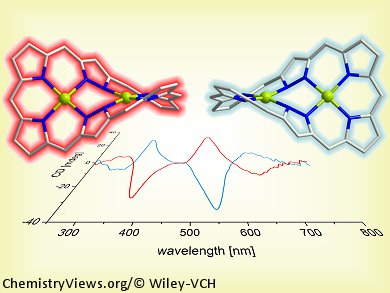A long sought-after pyrazole-based expanded porphyrin and its homobimetallic nickel(II) and copper(II) complexes have been synthesized and characterized. The structure of the macrocycle composed of four pyrroles and two pyrazoles, all linked by single carbon atoms, can be interpreted as two conjoined porphyrin-like subunits—hence the term “Siamese-twin porphyrin”—with the two opposing pyrazoles acting as the fusion points.
Franc Meyer, Gerhard Bringmann, and Christian Brückner from the Universities of Göttingen, Würzburg, both Germany, and Connecticut, USA, respectively, have shown that the solid-state conformations of the diprotonated free base and the bimetallic complexes are helimeric, providing a new example of a class of porphyrins with persistent chirality. In the bimetallic complexes, the metals are close enough to interact with each other and potentially also with a range of bridging axial ligands.
These macrocycles provide a new scaffold for the study of bimetallic multielectron processes or the biomimetic activation of small molecules.
- Siamese-Twin Porphyrin: A Pyrazole-Based Expanded Porphyrin of Persistent Helical Conformation,
L. K. Blusch, Y. Hemberger, K. Pröpper, B. Dittrich, F. Witterauf, M. John, G. Bringmann, C. Brückner, F. Meyer,
Chem. Eur. J. 2013.
DOI: 10.1002/chem.201204296




